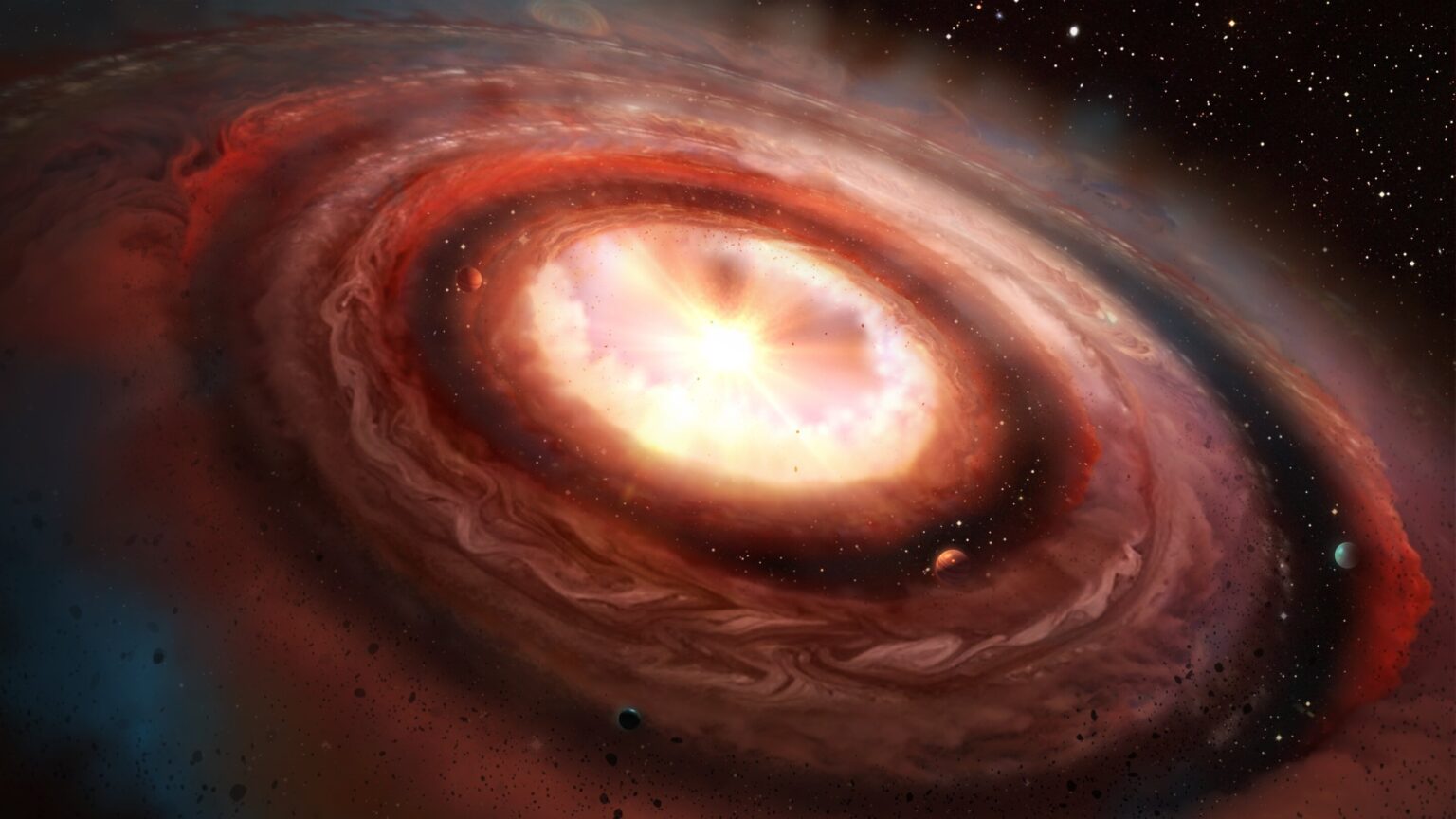Scientists have developed a new model of planet formation. It shows that even large bodies like Jupiter and Saturn can form very quickly. At the same time, the birth of some worlds triggers the process of formation of others.

How gas giants form
Scientists have developed a new model of planet formation, which for the first time takes into account absolutely all the processes that should have occurred, in particular the accretion of dust and migration of gas giants. A paper on this was published in the journal Astronomy & Astrophysics.
Scientists have long had a general picture of how at the beginning of the existence of stellar systems dust and gas orbiting around a newborn luminary begin to form first small pebbles, then — whole clumps and, finally, planetesimals, which later become the embryos of planets.
However, this picture didn’t allow us to fully understand how large objects such as gas giants form and evolve. The new model complemented the old one and helped to understand a lot about the evolution of systems.
What the new model showed
The main thing the scientists have added to the new model is turbulent gas-dust circles inside the accretion disks. Their existence was known for a long time, and now scientists have shown that in them the accumulation of dust is the most effective, and therefore the growth of the embryos of planets is very fast.
When the planet is already formed, the process only intensifies. Part of the dust begins to be pulled on itself, and the rest – pushes outside. This causes a new turbulent belt to emerge, which gives birth to a new planet that can also quickly grow into a gas giant.
Thus, the researchers not only showed that the formation of gas giants in newborn systems is not a problem. They proved that this should happen massively at distances up to 200 a.u. And such exoplanets distant from their stars have already been found. So, in fact, the systems can be extremely wide.
However, in the case of our own Solar System, this doesn’t mean we have to have ninth and tenth planets. On the contrary, the model convincingly shows that Neptune is the last planet precisely because it has run out of gas and dust.
According to phys.org


